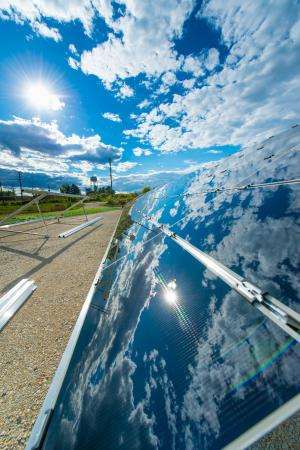Argonne nanoscientist Seth Darling is using a new 95-kilowatt array at Argonne to study how various types of solar panels perform in the Midwest region.
Argonne grew a fine crop of solar panels last summer. The lab built a 95-kilowatt solar farm onsite, which powers the laboratory's emergency operations center and saves about $9,400 and 94 metric tons of greenhouse gas emissions annually. The solar array doubles as a test bed for scientific research.
Argonne nanoscientist Seth Darling is using the new solar array to study how various types of solar panels perform in the Midwest region. "There's an absence of good, objective comparative data on real-world solar panel performance, particularly in the Midwest," said Darling. "That sort of information is good for everyone to have—homeowners, business owners, and so on."
Argonne has already partnered with the Illinois Tollway for several renewable energy projects, including multiple solar panel technologies located at the Tollway's Downers Grove headquarters. They are testing how solar technologies perform in the Midwest region under various environmental conditions.
"We're using six different types of panel technologies in our research partnership with the Illinois Tollway," said Darling. "So we're getting some great data, but not very strong statistics because there's only a small number of panels of each type in the study."
To alleviate this problem, Darling worked with Argonne sustainability manager Devin Hodge to install an onsite array that is more than ten times larger than the array located at the Tollway's headquarters and uses three different types of panel technologies.
"Argonne's larger solar array will enable us to collect more reliable data," said Darling. "We've also set up lots of weather data-gathering technology stations as part of the solar array."
The study is also recording weather data, which helps scientists calculate important statistics, like how much of the available sunlight a panel is capturing. Each solar panel is equipped with a temperature sensor, and the site has dynamometers to measure wind and pyrometers to measure sunlight, or "insolation"—the measure of solar radiation energy received on a surface area.
"We'd like to determine is which types of panels perform better in higher or lower levels of light, and, most importantly, the real cost is per unit of electricity generated from each one," said Darling.
Provided by Argonne National Laboratory























